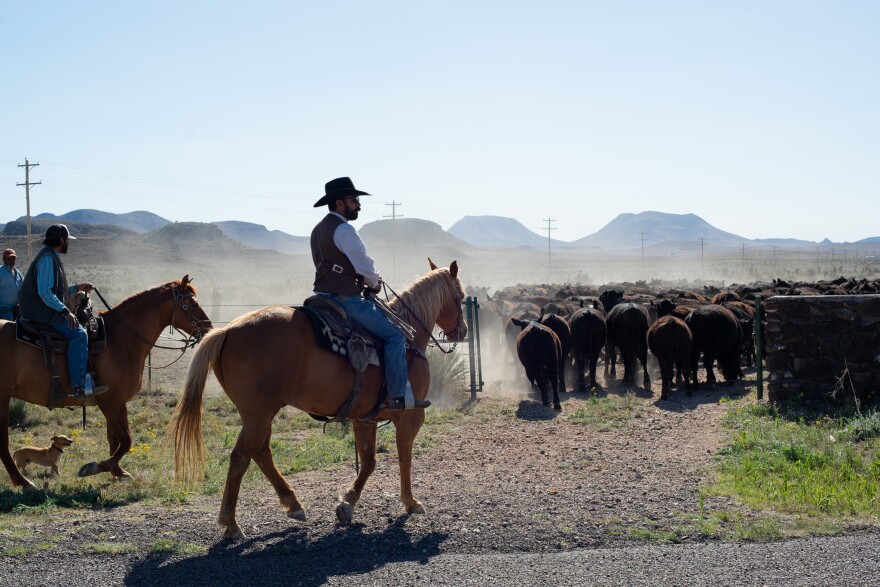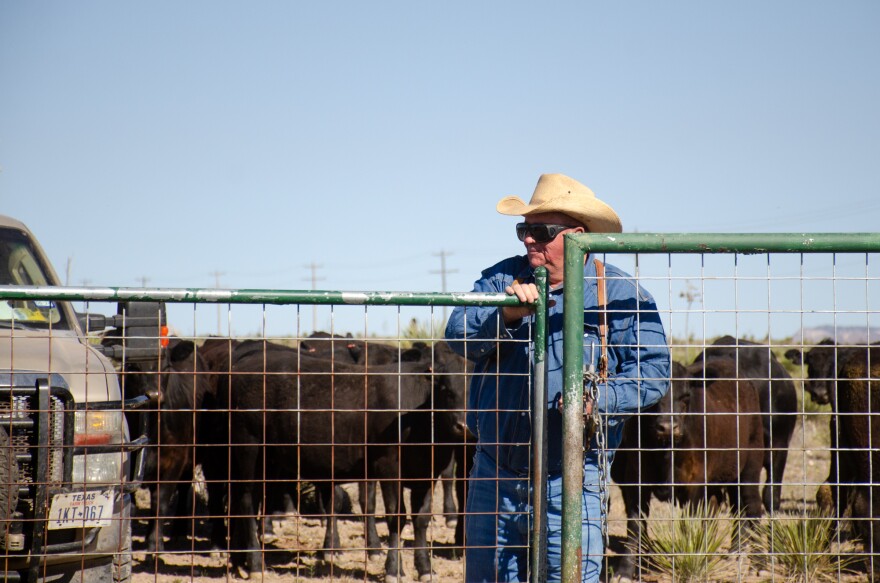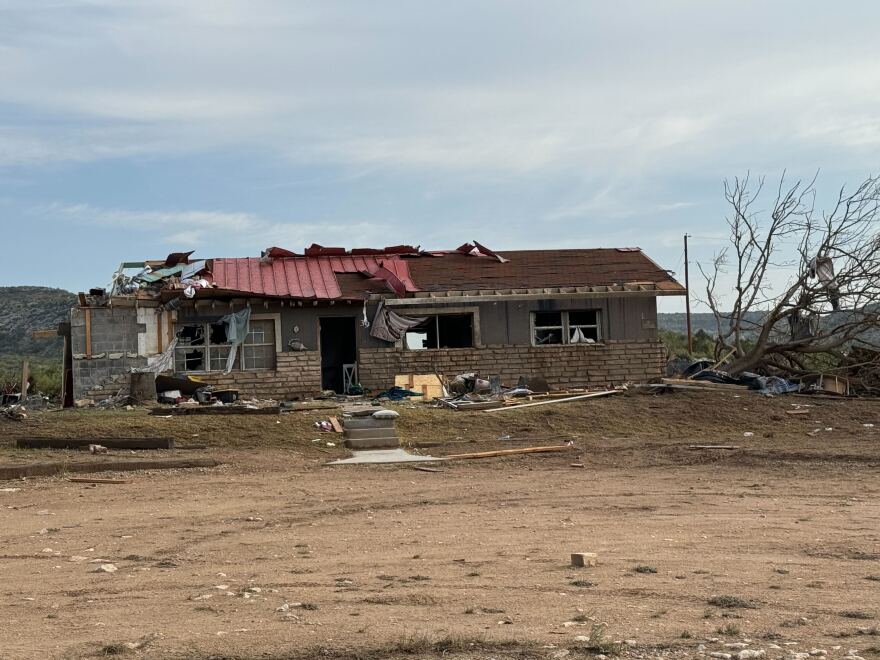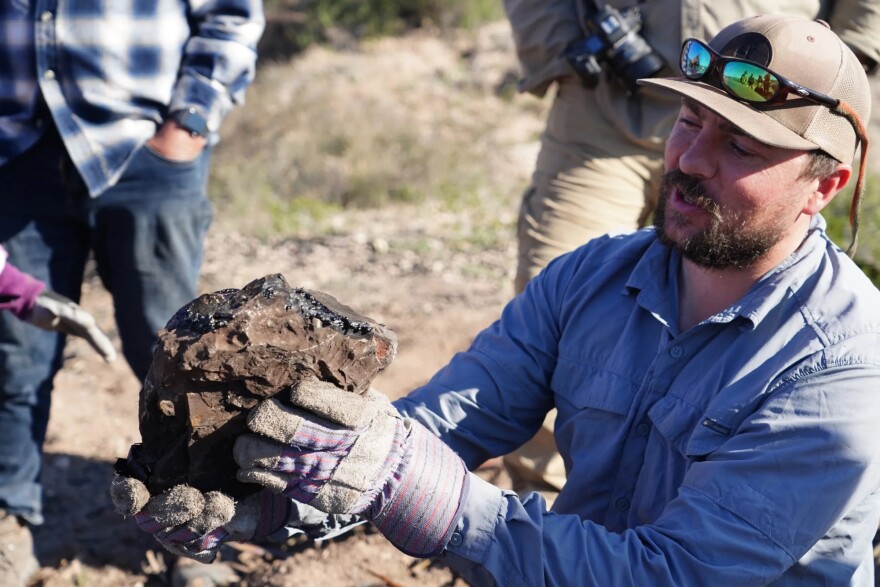Hi there,
A couple of weeks back, Carlos Morales received a text from Joe Williams of Big Bend Coffee Roasters. Joe told him there was going to be a cattle crossing in Fort Davis:
I thought it would make some unusually good photos. It might also be a disaster. Still great photos.
You might be wondering why our local coffee purveyor was texting our news director about cows, but Williams is also a cattle broker— he helps ranchers across West Texas buy and sell livestock.
“Cattle crossing” means what it sounds like: moving cattle from one side of the highway to the other by having them cross the street.
According to Joe, these days, traditional cattle crossings are somewhat unusual; ranchers are more likely to load cattle into a trailer to avoid stopping traffic. But lucky for us, rancher Bob Eppenauer was in a pinch and had to cross his cows on foot (on hoof?), giving us a window into a Wild West we don’t get to see as much out here.
According to Joe, the Eppenauer’s cattle operation is one of the oldest original ranches around (you can read more about them in this Texas Monthly piece).
So, cameras in hand, Carlos and Mitch Borden drove down to the crossing to capture the scene.

Carlos's Crossing Diary
I wasn’t sure what to look for. In his text message, Joe said the cattle crossing would be about 8 miles north of Marfa, so I kept my eye on the car’s odometer as we drove further down the road to Fort Davis.
But I ended up clocking our destination well before we got to the mile marker. It turns out, about a hundred cattle is more than enough to get your attention.
We pulled off the road, and saw the cattle up close — all crowding behind a gate. Bob Eppenauer, clad in denim jeans, a pearl snap shirt and a wide-brimmed hat, introduced himself and told Mitch and I with a firm tone: “You’ll want to be on the other side, away from the cattle when they cross.” I think he was worried we’d get trampled, but we’d soon learn the cattle were pretty slow moving.
At this point, law enforcement had shown up to block traffic and make way for the cattle’s safe passage.
Bob set off a loud, blaring siren, and the gate swung open.

Bob started wooing and calling to get the cows’ attention. By his voice and rhythm, you could tell his calls were well-practiced, fine-tuned over decades of ranching. He urged the cattle to follow him, dropping handfuls of feed on the ground to encourage them to move toward him and to the other side of the road.
As the cattle marched toward their next destination, I realized this scene could’ve been pulled from any Western, or any one of the cowboying novelas my mom can’t stop watching.
I’ve always understood this pocket of the state to be a preserved patch of what folks call “mythic Texas,” where cowboying culture is alive and well, but I hadn’t ever seen it. There are little windows into that lifestyle: there’s the occasional rodeo, saddleries, and those heavy ranch trucks barreling down dusty roads, but I don’t know that I’ve really experienced “mythic Texas.”
But here it was unfolding before me, one trodding cow at a time.
-Carlos Morales
Caló
Huato: It means commotion caused by the borlo (a couple of weeks back, we learned that borlo means trying to be more devilish than the devil). You see, the borlote can go on for a long time. It peaks and ebbs. The peak is the huato, when everybody’s excited about it in anticipation of a climax, which isn’t always a good end. Why were you late? I was at the huato, where a ruca who was fighting for a vato took off with the other ruca she was fighting, and her vato went home all agütado.
Caló is a borderland dialect. You can find more episodes here.
Other recent programming:
A tornado heavily damaged multiple homes and businesses in the small town of Sanderson on Sunday, leaving at least 10 people injured. Mitch Borden has the latest on that story here.

Earth ovens — where Indigenous people slow-roasted agaves and other foods — are found by the thousands in West Texas. Charles Koenig, an archeologist with Alpine’s Center for Big Bend Studies, has been studying earth ovens for years. Agave-roasting, he argues, was never just about sustenance. It was about celebration, and community. Listen to Drew Stuart speak with Koenig ahead of his talk at the Crowley Theater June 7th at 2 p.m. at this week’s agave fest.

High Five
Join DJ Tear Drop every Wednesday evening from 7 p.m. to 8 p.m. for a nonstop record selection of Souldies, Doo-wop, Tejano, Cumbias - we’re talking deep cuts, hidden gems, songs that hurt when there's nothing to hurt about and…well, just good tunes.

- Teardrop Eyes - The Dukes
- There’s No Feeling - Paul Ortiz y La Orquesta Son
- Sad Girl - Joe Bataan
- Forget Me - Don Julian & The Larks
- It’s Okay - The Sunglows
You can find Mi Tesoro Hour and all of our music shows on our Mixcloud.
PSAs
Agave Festival Marfa is an annual festival celebrating the agave and its influence on culture through food, film, music, science and spirits.
The Festival treats the Agave as the indicator species for a region that is culturally dynamic, multi-lingual and deeply informed by indigenous culture and history.
This year’s festival takes place Thursday, June 6th through Sunday, June 9th.
If you have PSAs you want on the air or in this newsletter, head to www.marfapublicradio.org/psa.



